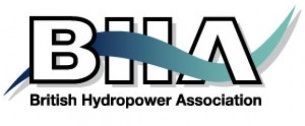The challenge
Reservoirs can develop algal growths which are unsightly, a hazard to recreational users and biodiversity, making the water costly to treat before it can be put into the public supplies.
The solution
A diverse range of processes affect reservoir water quality - and algal blooms in particular. These processes range from the nature and timing at which nutrients or other pollutants from surrounding catchments enter the reservoir, to reservoir characteristics such as depth, geometry, prevailing wind directions and speed, temperature, sunlight, and the range of organisms present. Through better understanding of these processes, and the development of numerical models, it has been possible to identify which management interventions will delivered the desire changes in reservoir water quality. Provision these solutions has included the development of innovative arrays of sensors to monitor the changing physical and biological characteristics of reservoirs. In other cases, research has shown that actions were needed in the catchments to reduce phosphorus and nitrogen nutrient inflows. Elsewhere, research has shown that different invasive species has upset the natural equilibrium in reservoirs, and contributed to deterioration in water quality.
Resulting benefits
Identifying the most cost effective method to maintain or restore good water quality is the major benefit arising from this research. With adequate knowledge of reservoir behaviour, it is possible to manage these water bodies to minimise risks of dangerous and costly deterioration in quality. UK expertise is now being applied in countries such as China, to help guide actions to remediate reservoirs and lakes that have been heavily polluted during recent rapid industrialisation.
In addition to the water utilities that manage reservoirs, other beneficiaries have included the recreational users (water sports, fishing, etc), benefits to biodiversity and to downstream communities and ecosystems.
Future directions
Further improvements in reservoir water quality management are likely to be driven by developments of cheaper sensors capable or monitoring an increasing range of variable. Greater use of telemetry will enable the wider use of simple to use numerical models.
- http://www.ceh.ac.uk/sci_programmes/water/Clatto-Reservoir-case-study.html
- http://www.bassenthwaite-lake.co.uk/default.asp?textpage=home&mainnav=home&bg=048ec5
- http://www.broads-authority.gov.uk/managing/rivers-and-broads/broads-restoration.html
- http://ukwir.forefront-library.com/reports/12-wr-33-4/95092
None listed.
None listed.
Customers:



Sources of funding
NERC National Capacity funding : xxxx
Defra / EA / NE project: xxxxx
EA project: xxxxx






 The Water Security Knowledge Exchange Portal supports the objectives of the
The Water Security Knowledge Exchange Portal supports the objectives of the 